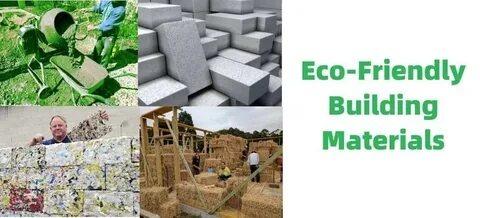Green Building Materials Market Gains Traction as Climate Goals, Policy, and Innovation Combine to Drive Demand

Green building materials are no longer a niche product; rather, they are essential to the planning of new construction and retrofits across the globe, according to DataM Intelligence's report, Green Building Materials Market Size, Share, Industry, Forecast & Outlook (2024-2031). The market is expanding rapidly as more laws focus on embodied carbon, building certification requirements become more stringent, and consumers want healthier, more environmentally friendly built environments.
Key Highlights & Insights
-
The market covers product types such as structural materials, exterior products (roofing, siding, windows & doors), interior materials (flooring, wall finishes, insulation), and building systems for energy and water management.
-
Demand is driven by rising awareness of environmental impact, energy costs, health concerns (e.g. indoor air quality), and stricter standards through certification programs (LEED, BREEAM, WELL, IGBC, etc.).
-
Regions such as North America and Europe currently dominate in revenue due to mature regulatory environments and green building standards; Asia-Pacific shows high growth potential, driven by urbanization, policy incentives, and large infrastructure projects.
Download your Sample Report Instantly (Corporate Email ID required for priority access):
https://www.datamintelligence.com/download-sample/green-building-materials-market?sv
Recent Developments in 2025
-
In 2025, the global green building materials market is estimated at USD 346.11 billion, reflecting strong growth as sustainability becomes more embedded in construction decision-making.
-
The market is expected to expand to about USD 708.9 billion by 2030, at a CAGR of around 14% from 2025 to 2030.
-
External product materials continue to lead in share, especially roofing, siding, windows & doors, driven by developers seeking energy performance, thermal comfort, and exterior durability.
-
Notable innovation activity in 2025 includes launches of eco-friendly materials such as sustainable plywood products that are fire-retardant, certified safe, and use no toxic chemicals.
-
Another example is the emergence of recyclable and low-smoke, halogen-free insulation materials for cables, aligning with demands for safer, more sustainable construction systems.
-
Corporate moves toward decarbonization are also visible, such as partnerships between construction material leaders and carbon-reduction technology firms to deploy greener concrete mixes that significantly reduce embodied emissions.
Strategic Outlook
Companies, developers, and policymakers looking to succeed in this evolving landscape should consider:
-
Advancing material innovations that not only reduce embodied carbon, but also improve durability, fire safety, indoor air quality, and thermal performance.
-
Adopting product transparency and verified sustainability credentials: Life Cycle Assessments (LCAs), Environmental Product Declarations (EPDs), and other third-party certifications are becoming non-negotiable.
-
Scaling regional manufacturing and supply chains to lower cost, improve availability, and reduce transport-related emissions.
-
Leveraging policy incentives, green building mandates, and public procurement programs to drive adoption.
-
Focusing equally on new construction and retrofit markets, since retrofits of existing buildings present large opportunities for green materials (insulation, sustainable façades, energy systems).
Conclusion
The market for low-frequency sound-absorbing insulation materials may not be the highest growth sector in acoustics, but it is steadily becoming more important. As automotive, marine, aerospace, and built environment users demand quieter, more comfortable spaces—and as regulations around noise tighten—suppliers who innovate in material science, design, and performance will be well rewarded. Asia-Pacific’s rising influence, North America’s strong current base, and Europe’s regulatory and premium segment leadership will define the competitive landscape into 2031.
- الاقتصاد والتجارة
- فن
- كورسات
- الحرف اليدوية
- الطعام والشراب
- الألعاب والترفيه
- الصحة
- تكنولوجيا
- أخرى
- دين
- رياضة


